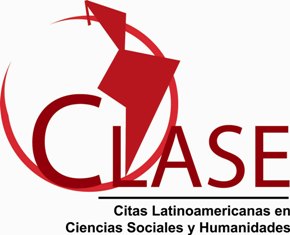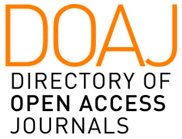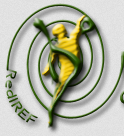Escucha dicótica: Evolución, limitantes y aplicación en el deporte. (Original
Palabras clave:
escucha dicótica; neurociencias; evaluación atencional; deporteResumen
El deporte se nutre de los avances de las neurociencias y resultados de aplicaciones de pruebas con fines investigativos. La escucha dicótica es considerada una de las pruebas auditiva-cognitiva más empleadas en los estudios neuropsicológicos. Una prueba típica de escucha dicótica consiste en la presentación simultánea de dos estímulos acústicos diferentes mediante auriculares, presentando uno de los estímulos al oído izquierdo y otro al derecho, donde los participantes reportan en cada ensayo información sobre el estímulo que escuchan. Este artículo tiene como objetivo exponer los avances y limitaciones de los estudios que emplean la escucha dicótica como método evaluativo, y su aplicación en el deporte, mediante el empleo del método histórico-lógico en el análisis de 40 fuentes bibliográficas médico/psicológicas actualizadas obtenidas de repositorios digitales. Se comprobó que el campo de aplicación del paradigma de escucha dicótica abarca varias áreas de las neurociencias, como la clínica neurológica, neuropsiquiatría y la neuropsicología. Existen diversas variantes de test de escucha dicótica según la modalidad de estímulos (verbal o auditivo) y la consigna: con dígitos, palabras monosílabas, palabras bisílabas, palabras trisílabas y frases, de atención forzada o no forzada. Las principales limitaciones de estos instrumentos radican en su dudosa validez y confiabilidad, asociando su éxito a las propiedades de los estímulos a los que se someten los pacientes y la consigna dada; además del exiguo alcance de este paradigma en otros ámbitos de las ciencias aplicadas al deporte, y en especial, la Psicología del Deporte.
Descargas
Referencias
Azañón-Gracia E, Sebastián-Gallés N. Test de escucha dicótica en español: pares de palabras bisilábicas. Rev Neurol 2005;41 (11):657-663. https://www.neurologia.com/articulo/2005193/esp
Beltramone, D., Serra, S., Rivarola, M., Quinteros, M., Baydas, L., Villareal, V., . . . Peirone, J. (2018). Enseñanza interdisciplinaria compartida: Fonoaudiología e ingeniería en Rehabilitación. IV Congreso Argentino de Ingeniería – X Congreso Argentino de Enseñanza de la Ingeniería. Córdoba.
Berretz, G., Packheiser, J., Wolf, O. T., &Ocklenburg, S. (2020). Dichotic listening performance and interhemispheric integration after stress exposure. Scientific reports, 10(1), 20804. https://doi.org/10.1038/s41598-020-77708-5
Bhat, M., Palaniswamy, H. P., Varsha, U., & Krishna, Y. (2021). Development and validation of an automated dichotic double word test in Indian English using MATLAB.International journal of pediatric otorhinolaryngology, 144, 110697. https://doi.org/10.1016/j.ijporl.2021.110697
Bouma, A., &Gootjes, L. (2011). Effects of attention on dichotic listening in elderly and patients with dementia of the Alzheimer type. Brain and cognition, 76(2), 286–293. https://doi.org/10.1016/j.bandc.2011.02.008
Brady, J. P., Berson, J. (1975). Stuttering, dichotic listening, and cerebral dominance. Archives of general psychiatry, 32(11), 1449–1452. https://doi.org/10.1001/archpsyc.1975.01760290117014
Broadbent, D. E. (1952). Listening to one of two synchronous messages. Journal of Experimental Psychology, 44(1), 51–55.https://doi.org/10.1037/h0056491
Bruder, G. E., Otto, M. W., McGrath, P. J., Stewart, J. W., Fava, M., Rosenbaum, J. F., &Quitkin, F. M. (1996). Dichotic listening before and after fluoxetine treatment for major depression: relations of laterality to therapeutic response. Neuropsychopharmacology: official publication of the American College of Neuropsychopharmacology, 15(2), 171–179. https://doi.org/10.1016/0893-133X(95)00180-L
Castro-Chavira, S. A., Gorecka, M. M., Vasylenko, O., & Rodríguez-Aranda, C. (2021). Effects of dichotic listening on gait domains of healthy older adults during dual-tasking: An exploratory observational study. Human movement science, 75, 102720. https://doi.org/10.1016/j.humov.2020.102720
Cherry, E. C. (1953). Some experiments on the recognition of speech, with one and with two ears. Journal of the Acoustical Society of America, 25, 975–979. https://doi.org/10.1121/1.1907229
Cedeño Mero, R. E; Patiño Zambrano, V. P; Balladares-Mazzini, M. B; Patiño Zambrano, W. A. (2022). Valoración y validación de pruebas de las alteraciones de la escucha dicótica. Una aproximación desde la Telesalud. RECIMUNDO, 6(1), 191-201. https://doi.org/10.26820/recimundo/6.
Cherry, E. C. (1953). Some experiments on the recognition of speech, with one and with two ears. Journal of the Acoustical Society of America, 25, 975–979. https://doi.org/10.1121/1.1907229
Costa, M. J., Santos, S., &Schochat, E. (2021). Dichotic sentence identification test in Portuguese: a study in young adults. Brazilian journal of otorhinolaryngology, 87(4), 478–485. https://doi.org/10.1016/j.bjorl.2020.11.018
Duarte, A.(2022).Estudio de la memoria en un grupo de escolares ajedrecistas Olimpia Vol 19, núm1, Olimpia enero – marzo 2022
Friedman, M. S., Bruder, G. E., Nestor, P. G., Stuart, B. K., Amador, X. F., & Gorman, J. M. (2001). Perceptual asymmetries in schizophrenia: subtype differences in left hemisphere dominance for dichotic fused words. The American journal of psychiatry,158(9), 1437–1440. https://doi.org/10.1176/appi.ajp.158.9.1437
Gadea, M., Gomez, C., & Espert, R. (2000). Test-retest performance for the consonant-vowel dichotic listening test with and without attentional manipulations. Journal of clinical and experimental neuropsychology, 22(6), 793–803. https://doi.org/10.1076/jcen.22.6.793.959
Gadea-Doménech, M., & Espert-Tortajada, R. (2004). Aplicaciones de la escucha dicótica verbal a la clínica neurológica y neuropsiquiátrica [Applicationsof verbal dichoticlistening in neurological and neuropsychiatricclinicalpractice]. Revista de neurologia, 39(1), 74–80. https://pubmed.ncbi.nlm.nih.gov/15257531/
Geffen G. (1978). The development of the right ear advantage in dichotic listening with focused attention. Cortex; a journal devoted to the study of the nervous system and behavior, 14(2), 169–177. https://doi.org/10.1016/s0010-9452(78)80042-2
Gorecka, M. M., Vasylenko, O., & Rodríguez-Aranda, C. (2020). Dichotic listening while walking: A dual-task paradigm examining gait asymmetries in healthy older and younger adults. Journal of clinical and experimental neuropsychology, 42(8), 794–810. https://doi.org/10.1080/13803395.2020.1811207
Hausmann, D., Laabling, S., Hoth, S., Plinkert, P. K., &Klingmann, C. (2011). Assessment of the central hearing system of sport divers. Undersea & hyperbaric medicine: journal of the Undersea and Hyperbaric Medical Society, Inc, 38(6), 527–535.
Hugdahl, K.,Helland, T., Faerevaag, M. K., Lyssand, E. T., &Asbjørnsen, A. (1995). Absence of ear advantage on the consonant-vowel dichotic listening test in adolescent and adult dyslexics: specific auditory-phonetic dysfunction. Journal of clinical and experimental neuropsychology, 17(6), 833–840. https://doi.org/10.1080/01688639508402432
Jacobson, J. T., Deppe, U., & Murray, T. J. (1983). Dichotic paradigms in multiple sclerosis. Ear and hearing, 4(6), 311–317. https://doi.org/10.1097/00003446-198311000-00009
Kelley, K. S., &Littenberg, B. (2019). Dichotic Listening Test-Retest Reliability in Children. Journal of speech, language, and hearing research: JSLHR, 62(1), 169–176. https://doi.org/10.1044/2018_JSLHR-H-17-0158
Kinsbourne M. (1973). The control of attention by interaction between the cerebral hemispheres. In Kornblum S, ed. Attention and Performance. , 4, 4-276. https://philpapers.org/rec/KINTCO-17
Kinsbourne, M. (1975). The Mechanisms of Hemispheric Control of the Lateral Gradient of Attention. In P. M. Rabbit, & S. Doric (Eds.), Attention and Performance (pp. 81-97). London: Academic Press. https://www.scirp.org/(S(lz5mqp453edsnp55rrgjct55.))/reference/referencespapers.aspx?referenceid=1207955
Kimura, D. (1961). Cerebral dominance and the perception of verbal stimuli. Canadian Journal of Psychology/Revue canadienne de psychologie, 15(3), 166–171. https://doi.org/10.1037/h0083219
Llanes A; Suarez, M; Cañizares, M. (2021) Fundamentos teóricos para el estudio del pensamiento operativo en el deporte. Revista Olimpia, octubre diciembre. 2021. Vol 18 núm 4.
Majidpour A, Moheb Aleaba M, Aghamolaei M, Nazeri A. (2022). Review of the Factors Affecting Dichotic Listening. AudVestib Res;31(2):74-83. https://doi.org/10.18502/avr.v31i2.9111
Martínez, J. A., & Sánchez, E. (1999). Dichotic listening CV lateralization and developmental dyslexia. Journal of clinical and experimental neuropsychology, 21(4), 519–534. https://doi.org/10.1076/jcen.21.4.519.880
Mekonnen, A. M., &Yigezu, M. (2022). Dichotic listening abilities among liturgical teachers of the Ethiopian Orthodox Church. Laterality,27(2), 172–189. https://doi.org/10.1080/1357650X.2021.1955911
Mikheev, M., Mohr, C., Afanasiev, S., Landis, T., &Thut, G. (2002). Motor control and cerebral hemispheric specialization in highly qualified judo wrestlers. Neuropsychologia, 40(8), 1209–1219. https://doi.org/10.1016/s0028-3932(01)00227-5
Mondor, T. A., & Bryden, M. P. (1991). The influence of attention on the dichotic REA. Neuropsychologia, 29(12), 1179–1190. https://doi.org/10.1016/0028-3932(91)90032-4
Navarro, M. (2021). Eficacia de un programa de rehabilitación de las funciones atencionales mediante tareas competitivas multijugador. Estudio clínico, neurofisiológico y neuroanatómico en pacientes con ictus. (Tesis doctoral, Universidad de Valencia). https://dialnet.unirioja.es/servlet/tesis?codigo=301297
Segalowitz SJ. Validity and reliability of noninvasive lateralization measures. In Obrzut JE, Hynd GW, eds. Child neuropsychology. Vol. 1: theory and research. San Diego: AcademicPress; 1986. p. 191-208.
Rodríguez, M. C; Montoya, J. C. (2006). Entrenamiento en el mantenimiento de la atención en deportistas y su efectividad en el rendimiento. Act. Colom. Psicol, 9 (1).
Shanks, J., Ryan, W. (1976). A comparison of aphasic and non-brain-injured adults on a dichotic CV-syllable listening task. Cortex; a journal devoted to the study of the nervous system and behavior, 12(2), 100–112. https://doi.org/10.1016/s0010-9452(76)80014-7
Springer, J. A., Garvey, M. J., Varney, N. R., & Roberts, R. J. (1991). Dichotic listening failure in dysphoric neuropsychiatric patients who endorse multiple seizure-like symptoms. The Journal of nervous and mental disease, 179(8), 459–467. https://doi.org/10.1097/00005053-199108000-00002
Tanaka, K., Ross, B., Kuriki, S., Harashima, T., Obuchi, C., & Okamoto, H. (2021). Neurophysiological Evaluation of Right-Ear Advantage During Dichotic Listening. Frontiers in psychology, 12, 696263. https://doi.org/10.3389/fpsyg.2021.696263
Teng EL. Dichotic ear difference is a poor index for the functional asymmetry between the cerebral hemispheres. Neuropsychologia 1981; 19: 235-40.
Westerhausen, R., &Kompus, K. (2018). How to get a left-ear advantage: A technical review of assessing brain asymmetry with dichotic listening. Scandinavian journal of psychology,59(1), 66–73. https://doi.org/10.1111/sjop.12408
Westerhausen, R., Samuelsen, F. (2020). An optimal dichotic-listening paradigm for the assessment of hemispheric dominance for speech processing. PloSone, 15(6), e0234665. https://doi.org/10.1371/journal.pone.0234665

































